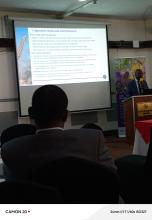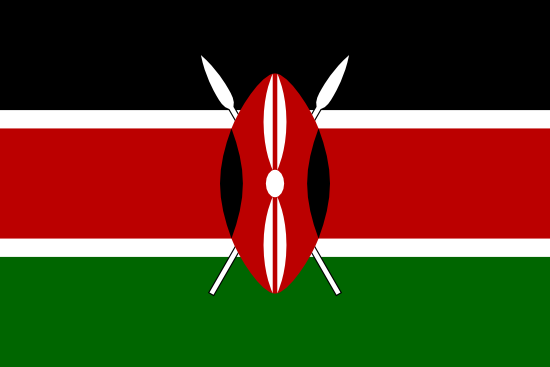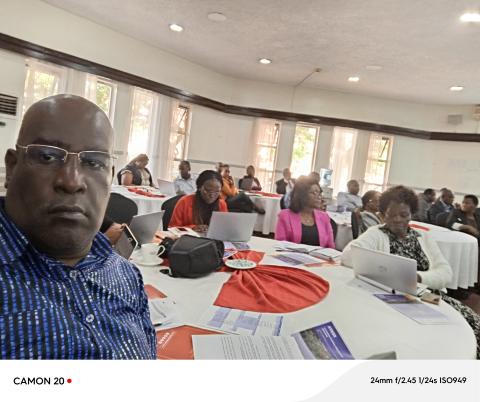Aligning Sectoral Public Policy Instruments in Agriculture, Livestock, and Forestry with the Global Biodiversity Framework
1. Introduction The workshop on Aligning Sectoral Public Policy Instruments (SPPIs) in Agriculture, Livestock, and Forestry with the Global Biodiversity Framework (GBF) was held on 11th March 2025 at Muthu Silver Springs Hotel, Nairobi. Organized by the International Union for Conservation of Nature (IUCN) through the BIODEV2030 Phase 2 project, the workshop aimed to facilitate discussions on policy reforms that can help Kenya align its sectoral public policies with the GBF and contribute to the National Biodiversity Strategy and Action Plan (NBSAP) revision and implementation.

The event brought together key stakeholders from government, development partners, private sector actors, civil society organizations, youth, indigenous peoples and local communities, and academia to explore policy gaps, enforcement challenges, and opportunities for alignment with global biodiversity goals.
2. Workshop Objectives The workshop was designed to achieve the following objectives:
- Build consensus on Altai Consulting’s analysis of the relationships between production practices, biodiversity pressures, and policy instruments.
- Review policy instruments (e.g., poor implementation, weak policies, enforcement gaps, subsidies, and taxes) that encourage harmful production practices.
- Develop recommendations for enhanced SPPI alignment to support Kenya in meeting GBF targets and implementing the revised NBSAP.
3. Workshop Proceedings
Opening Session: The workshop commenced with opening remarks by key representatives from IUCN, the French Embassy, and the Ministry of Environment, Climate Change, and Forestry (MoECCF). Catherine Mungai (IUCN) provided an overview of the workshop’s objectives and set the context for discussions.
Setting the Scene: Drs. Kaigongi and Macharia presented an overview of policy subsidies and reforms needed to reduce biodiversity loss, highlighting sector-specific challenges and opportunities. This was followed by a presentation from Altai Consulting, featuring an analysis of production practices, biodiversity pressures, and policy instruments influencing them. A video and PowerPoint presentation provided further insights into the linkages between harmful production practices and policy gaps.
Thematic Breakout Sessions: Participants were divided into three sectoral groups:
- Agriculture (small-scale and horticulture) sector
- Livestock (pastoralism) sector
- Forestry sector
Each group assessed existing policy instruments and discussed strategies for aligning them with the GBF. Facilitated by Drs. Kaigongi and Macharia, the sessions focused on identifying policy gaps, exploring best practices, and proposing actionable reforms.
Plenary Session: Following the breakout discussions, group leaders presented their findings in a plenary session. A cross-sectoral analysis of trends and policy gaps was conducted to develop integrated policy recommendations.
Stakeholder Roadmap Development: A collaborative session was held to outline actionable steps for reforming SPPI frameworks to align with biodiversity conservation goals. Participants emphasized the need for targeted policy interventions, improved enforcement mechanisms, and cross-sectoral collaboration.
4. Key Outcomes and Recommendations
- Review of Economic Pressures and Policy Gaps:
- Agricultural expansion, overgrazing, and deforestation continue to be major drivers of biodiversity loss.
- Existing policies lack enforcement mechanisms, leading to continued environmental degradation.
- Identification of Priority Measures:
- Strengthening subsidies and incentives to promote sustainable agricultural and livestock practices.
- Enhancing legal frameworks to regulate forestry exploitation and ensure conservation efforts.
- Policy Recommendations:
- Integrate biodiversity considerations into agricultural, livestock, and forestry policies.
- Strengthen monitoring and enforcement of environmental regulations.
- Foster public-private partnerships to support biodiversity-friendly production practices.
- Develop three sector-specific policy briefs to inform government decision-making and stakeholder engagement.
5. Stakeholder Engagement and Next Steps The workshop underscored the importance of collaboration among government agencies, development partners, private sector actors, civil society organizations, and academia. Key stakeholders committed to:
- Developing policy briefs based on the workshop findings.
- Engaging policymakers to implement recommended reforms.
- Enhancing intersectoral coordination through the National Biodiversity Coordination Mechanism (NBCM).
6. Conclusion The workshop provided a valuable platform for stakeholders to assess Kenya’s sectoral policy landscape and explore pathways for aligning with the GBF. By leveraging insights from Altai Consulting’s analysis and stakeholder discussions, the event laid the groundwork for meaningful policy reforms to promote sustainable biodiversity management in Kenya.
7. Annex: Workshop Participants The workshop was attended by representatives from the following institutions:
- International Union for Conservation of Nature (IUCN)
- Ministry of Environment, Climate Change, and Forestry (MoECCF)
- National Environment Management Authority (NEMA)
- Kenya Forest Service (KFS)
- Kenya Agricultural and Livestock Research Organization (KALRO)
- World Wide Fund for Nature (WWF-Kenya)
- Indigenous Peoples and Local Communities (IPLC) representatives
- Private sector actors in agriculture, livestock, and forestry
- Academic and research institutions
- Development partners and donor agencies

